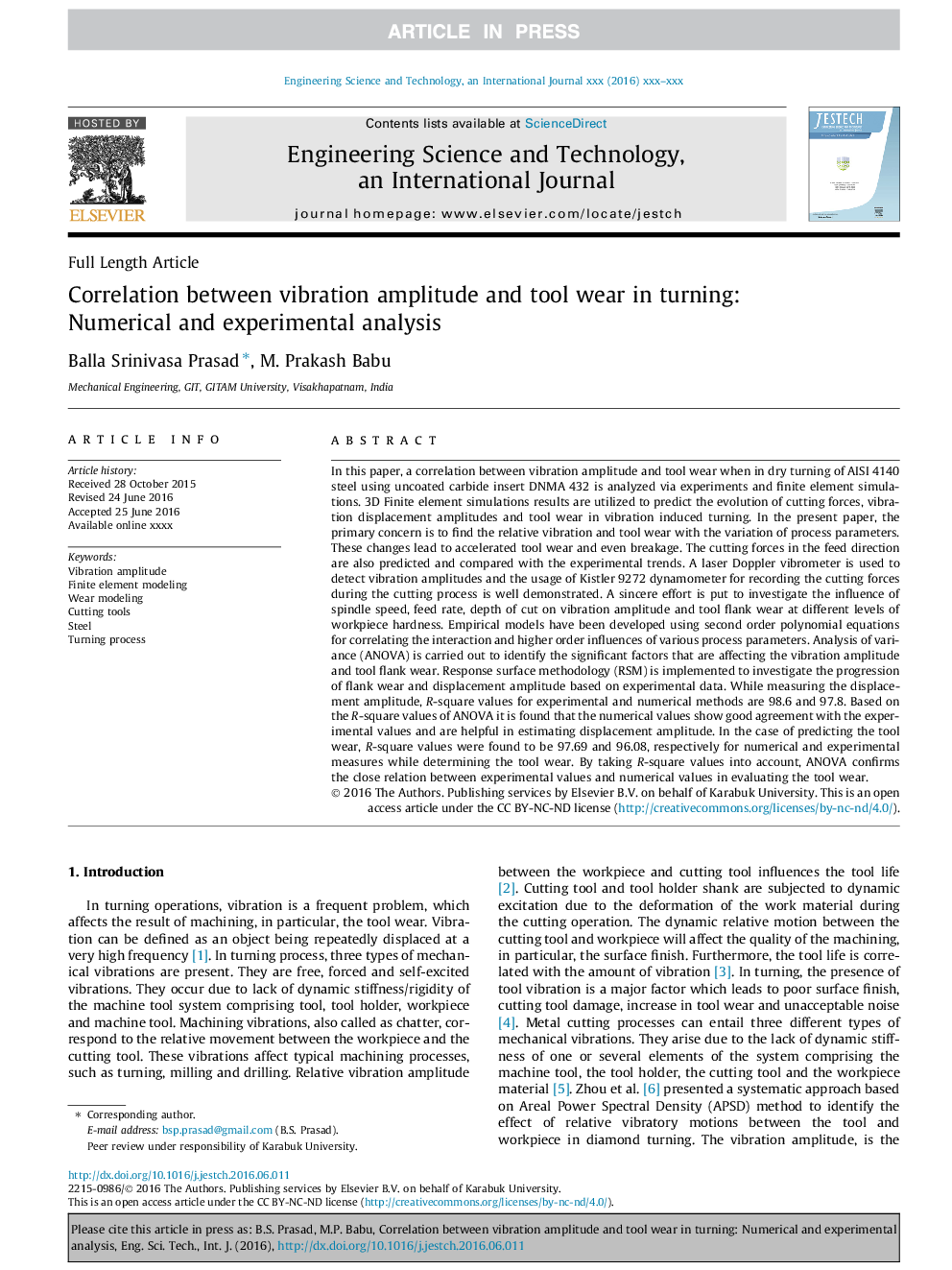| کد مقاله | کد نشریه | سال انتشار | مقاله انگلیسی | نسخه تمام متن |
|---|---|---|---|---|
| 6894053 | 1445574 | 2017 | 15 صفحه PDF | دانلود رایگان |
عنوان انگلیسی مقاله ISI
Correlation between vibration amplitude and tool wear in turning: Numerical and experimental analysis
ترجمه فارسی عنوان
ارتباط بین دامنه ارتعاش و سایش ابزار در چرخش: تجزیه و تحلیل عددی و تجربی
دانلود مقاله + سفارش ترجمه
دانلود مقاله ISI انگلیسی
رایگان برای ایرانیان
کلمات کلیدی
دامنه ارتعاش، مدل سازی عنصر محدود مدلسازی را بپوشانید ابزار برش، فولاد، روند چرخش
موضوعات مرتبط
مهندسی و علوم پایه
مهندسی کامپیوتر
علوم کامپیوتر (عمومی)
چکیده انگلیسی
In this paper, a correlation between vibration amplitude and tool wear when in dry turning of AISI 4140 steel using uncoated carbide insert DNMA 432 is analyzed via experiments and finite element simulations. 3D Finite element simulations results are utilized to predict the evolution of cutting forces, vibration displacement amplitudes and tool wear in vibration induced turning. In the present paper, the primary concern is to find the relative vibration and tool wear with the variation of process parameters. These changes lead to accelerated tool wear and even breakage. The cutting forces in the feed direction are also predicted and compared with the experimental trends. A laser Doppler vibrometer is used to detect vibration amplitudes and the usage of Kistler 9272 dynamometer for recording the cutting forces during the cutting process is well demonstrated. A sincere effort is put to investigate the influence of spindle speed, feed rate, depth of cut on vibration amplitude and tool flank wear at different levels of workpiece hardness. Empirical models have been developed using second order polynomial equations for correlating the interaction and higher order influences of various process parameters. Analysis of variance (ANOVA) is carried out to identify the significant factors that are affecting the vibration amplitude and tool flank wear. Response surface methodology (RSM) is implemented to investigate the progression of flank wear and displacement amplitude based on experimental data. While measuring the displacement amplitude, R-square values for experimental and numerical methods are 98.6 and 97.8. Based on the R-square values of ANOVA it is found that the numerical values show good agreement with the experimental values and are helpful in estimating displacement amplitude. In the case of predicting the tool wear, R-square values were found to be 97.69 and 96.08, respectively for numerical and experimental measures while determining the tool wear. By taking R-square values into account, ANOVA confirms the close relation between experimental values and numerical values in evaluating the tool wear.
ناشر
Database: Elsevier - ScienceDirect (ساینس دایرکت)
Journal: Engineering Science and Technology, an International Journal - Volume 20, Issue 1, February 2017, Pages 197-211
Journal: Engineering Science and Technology, an International Journal - Volume 20, Issue 1, February 2017, Pages 197-211
نویسندگان
Balla Srinivasa Prasad, M. Prakash Babu,
